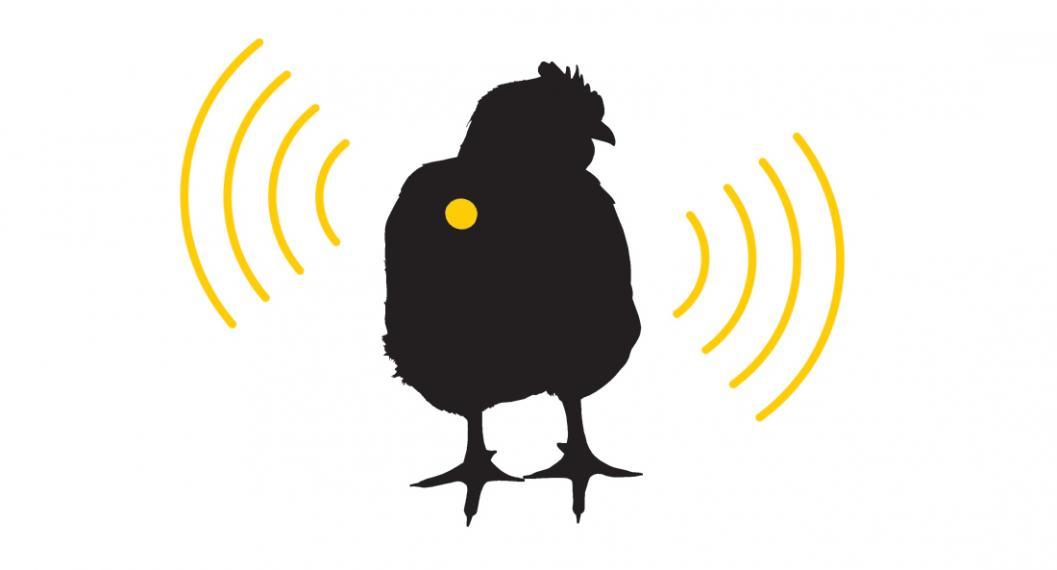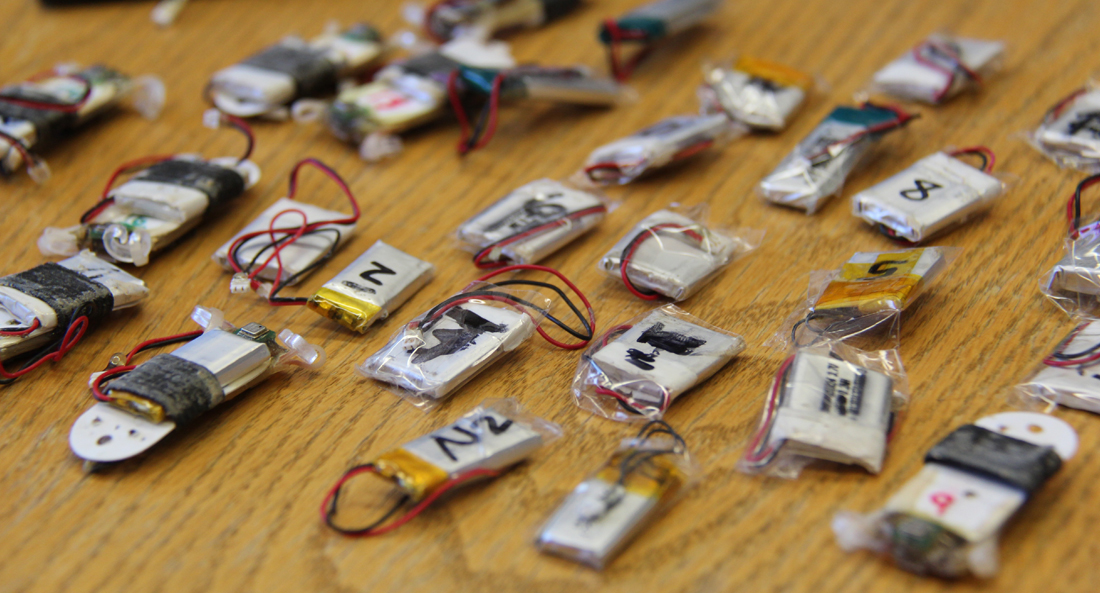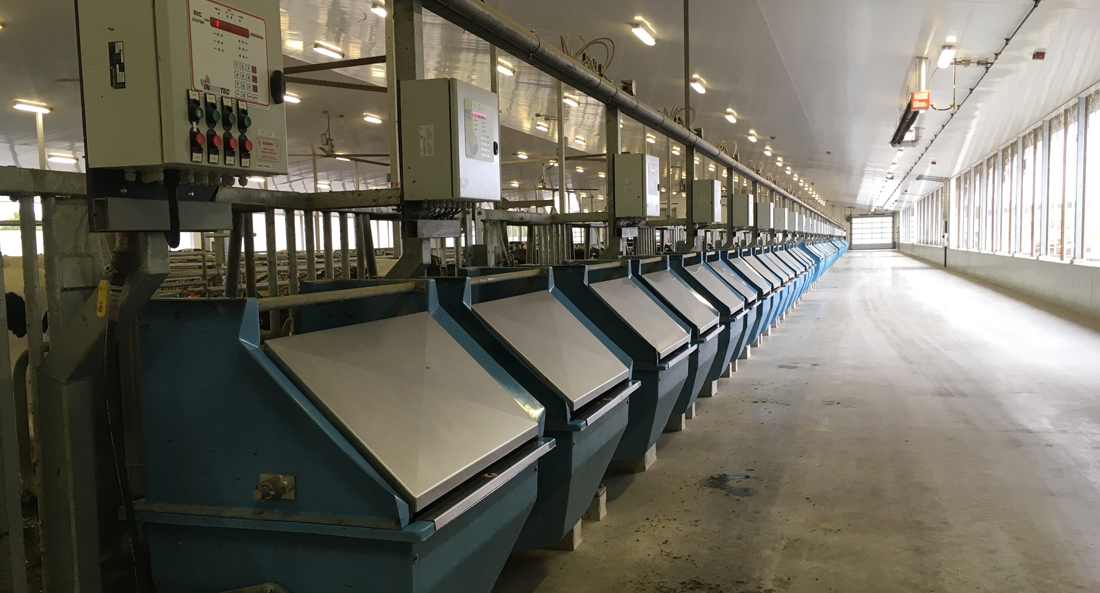Studying animals (on an individual scale) with biosensors

The television show Portlandia has a popular skit where two characters ask a server detailed questions about the chicken on the menu. What did the chicken eat? Is it local? Organic? Did it have friends? Was it happy? The server presents a folder of information on “Colin the chicken”.
Interestingly enough, animal biosciences professor Dominique Bureau says that technology isn’t far off from providing this level of detailed information on individual animals.
Minimally or non-invasive biosensors are being developed by technology companies to do just that. The result will be big data that will enable the customization of care for specific animals.
Technology companies are promising big things, but Bureau says that the large datasets being collected by the sensors aren’t having the impact promised.
“Tech companies need us,” says Bureau. “Companies are investing more in [animal science] research because they can get the data, but we can develop the control research to correlate and translate this into useable information,” he adds. “What can we answer? What does it mean? What is the solution?”
In short, biosensor information collected from a patch on a chicken, isn’t helpful unless you have an understanding of what indicates health and wellbeing. But if you have a baseline measure, a farmer will be able to use the data being collected by a biosensor to provide specific nutrients and care to an individual animal.
Using data to provide proof points to consumers
In Bureau’s opinion, one of the most interesting aspects of monitoring animals on an individual scale is its potential for improving traceability and giving consumers the information they want.
“If you deliver a slab of bacon to a customer, they ask ‘Was it treated well?’ Saying, ‘I’m a third generation farmer’ doesn’t tell them much about how well you are doing your job,” he explains. “Having a trace of the animal from cradle to grave does. You could say, ‘All through its life, this pig was, physiology speaking and in terms of behaviour, really happy.’”
This concept is called food traceability, which is the ability to track any food through all stages of production, processing and distribution. It’s also something that more consumers are looking for.
With set biosensor standards for species, an animal could be tracked from birth to slaughter and objectively reported on to consumers. Nutritional information, activity level, health and wellbeing information could be recorded and follow “Colin the chicken” all the way through the food system to the consumer.
Alexandra Harlander, an animal welfare researcher in the department who specializes in the welfare of egg laying hens, agrees. She says consumers want to know the bird’s point of view.
“Consumers are very interested in natural behaviour and preference,” she says. “With the help of individual non-invasive data loggers, we are able to collect a large amount of objective data over a short period of time.”
Determining the needs of an animal through data

For Harlander’s research, she uses small data loggers that were originally developed for use on reptiles and insects. This small piece of equipment is placed in a plastic bag, which is then strapped around the bird’s wings. It goes unnoticed by the chicken and looks like a backpack.
Inside the backpack, the logger includes a gyroscope and collects activity level data over a 24 hour period on three axes. All of the bird’s movements are tracked.
It’s like a Fitbit for chickens she says.
The goal of her research is to use the big data collected from these mini backpacks to determine how birds develop their locomotion skills and how their activity impacts and indicates their health.
“We know there are a lot of fracture problems in laying hens housed in non-cage systems,” she says. “We assume it’s due to collisions with the housing structures, but honestly, we don’t know.”
By understanding birds’ activity levels, her team of researchers can determine birds’ preferences, natural behaviours and requirements for safe housing. For example, her research team recently determined that ramps in aviary housing systems should have inclines of no more than 40 degrees.
These finding were based on the use of a force plate which analyzed the weight distribution of individual birds’ steps as they prepared to walk up ramps.
She’s also used loggers to objectively determine what bedding hens prefer, by tracking how much time they spent in different rooms with different bedding.
This kind of tech also works on larger animals like dairy cows.
John Cant, and fellow researchers in the department, currently track animal feed intake, weight, body conditioning, CO2 and methane production all through the use of technology tailored to track at the individual scale.
“The data we are collecting will help establish benchmarks for the way you want animals to be treated on farms. That way farmers can know and be secure in what is happening,” he explains.

Currently dairy farms treat their cows on a group scale; they all get the same diet. With individualized monitoring, farmers can tailor a cow’s diet to her personalized needs.
“It’s important to know if we are over feeding or underfeeding on an individual scale, because this leads to disease problems. We can adjust what we are feeding them to prevent problems later.”
The research being done by Cant and others at the Livestock Research Innovation Centre – Dairy Facility in Elora, Ontario is already being used to change management practice on dairy farmers and will one day change the dairy breed.
Based on the data collected, Cant explains that animals can be selectively bred for desirable traits such as low methane production and higher efficiency in capturing nutrients. It’s a win for farmers, cows and the environment.
Bioinformatics set the course for the Department of Animal Biosciences
Bureau, Harlander and Cant are just three of the researchers in the Department of Animal Biosciences who see the potential for biosensing technology and bioinformatics, the use of methods and software tools to understand biological data.
The whole department is working to integrate big data into everything they do.
“This is our vision for the future. Where we intend to go,” says Bureau.
The plan is to test out technology currently available and in development, and in some cases, create the tech. Once they have the datasets, they can create baseline measurements for health, productivity and welfare, and design strategies to respond to sensor outputs. By combining their traditional work in animal nutrition, welfare and health then can make full use of the technology available.
Making sense of the data is possibly the biggest hurdle; without an interface tool, large datasets are nearly incomprehensible. Researchers like Harlander need the help of a mathematician to make sense of the complex data. Unfortunately, her data loggers don’t come with an app like a Fitbit does.
“Big data sounds very fancy but you need someone to deal with the data,” she explains. “With commercial equipment, you can see the data on your iPhone or a tracker. There is no simple interface to translate the data we collect.”
But the work doesn’t seem to be discouraging any of the researchers.
“The things that could be developed have huge potential. There are so many species, so many things to do, and so many jobs that could be created,” says Bureau.
It seems receiving a file folder of information on the chicken you order at a restaurant is not far-fetched at all.